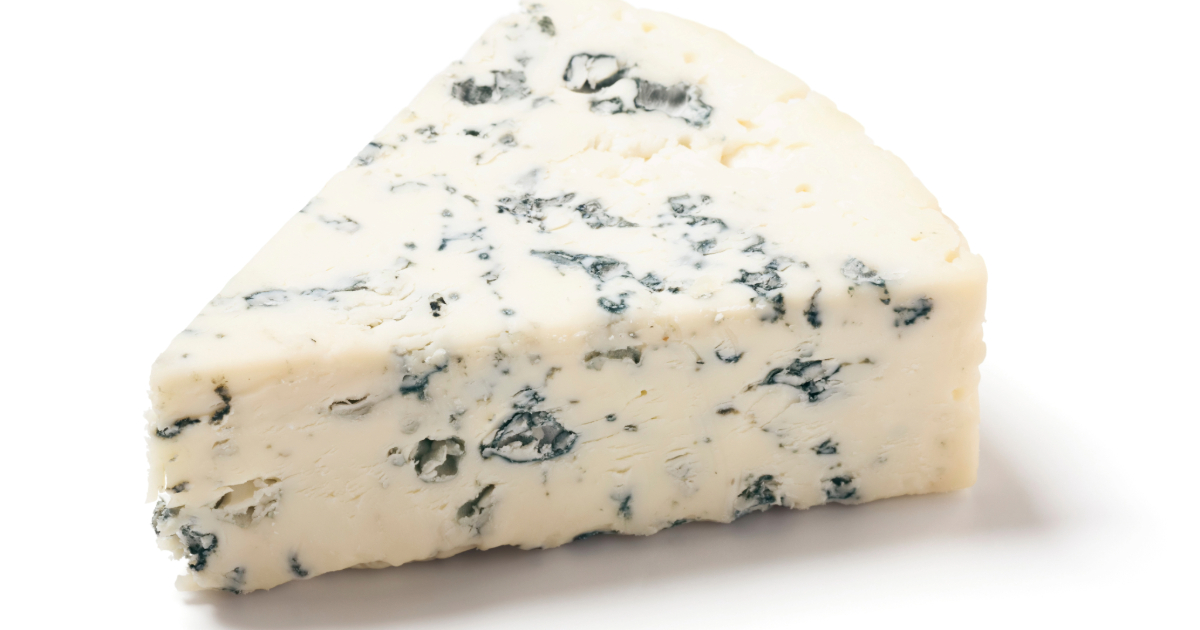Feta and gorgonzola are two of the most popular cheeses used in recipes around the world.

But what sets them apart?
A Brief History of Feta and Gorgonzola
To understand what makes these cheeses unique, let's first look at their origins.
Feta dates back centuries as a staple in Greek culture produced from sheep and goat's milk. In fact, feta cheese production in Greece has PDO (Protected Designation of Origin) status from the EU protecting the name "feta" for cheese authentically produced using traditional techniques in Greece. True feta is made only from local sheep and goat's milk in designated regions of Greece.
Comparatively, gorgonzola traces its roots to the town of Gorgonzola, Italy in the 11th century, crafted from cow’s milk. Like feta, authentic gorgonzola also carries PDO protection ensuring specific methods are followed, especially in designated areas of Italy.
Now let's analyze how these famous cheeses actually differ when it comes to production, flavor profiles, texture, uses in the kitchen, and nutrition.
Making Feta vs. Making Gorgonzola
The processes for crafting feta and gorgonzola share some similarities, but have notable differences that influence the final product.
Producing feta cheese involves curdling a mixture of sheep and goat's milk with rennet, draining the curds, cutting them into blocks, salting the curd blocks, and soaking them in a brine solution for at least two months. The salty brine gives feta its characteristic tang. Goat milk can comprise less than 30% of the milk blend.
Making gorgonzola also begins with curdling milk using rennet, but always uses cow’s milk. The curds are drained and pressed into molds. Then the signature blue-green "marbling" seen in gorgonzola occurs as a saltwater solution helps mold spores proliferate through the cheese as it ages, anywhere from 3 to 6 months.
So while they both rely on curds draining and pressing, the types of milk used and the aging conditions differ significantly between feta vs. gorgonzola production methods.
Key Takeaway: Feta and gorgonzola use different milk bases (sheep/goat vs. cow) and aging techniques, impacting their final characteristics.
Flavor and Texture Comparison: Feta vs. Gorgonzola
Flavor Profiles
Given the differences in ingredients and processing, feta and gorgonzola unsurprisingly deliver very distinct flavor profiles:
- Feta is known for being tangy, salty, and mildly sharp depending on sheep/goat milk ratios.
- Gorgonzola imparts a pungent, funky, "blue cheese" flavor thanks to mold development during aging - ranging from milder and sweet to quite strong and spicy depending on age.
So while they can both offer bold flavor, feta tends brighter and saltier as gorgonzola veers earthier and more funky. The flavors come through very differently between the cheeses.
Cheese Texture
In terms of texture feta and gorgonzola also diverge noticeably:
- Feta has a crumbly, crumbly texture that easily flakes apart thanks to its salt brine aging.
- Gorgonzola’s texture is typically smooth, creamy, and spreadable when young - becoming firm and crumbly when aged longer.
So while aged gorgonzola reaches a crumbly texture like feta, its signature soft and spreadable texture sets it apart.
Cuisine and Uses: When to Choose Feta vs. Gorgonzola
From salads to pizza, feta and gorgonzola make frequent appearances across global cuisine. But what cheese suits specific dishes best?
Here's an easy guide on when to select feta or gorgonzola based on common uses:
Pick Feta For:
- Greek salads
- Mediterranean dips like tzatziki
- Spanakopita and other Greek savory pies
- Middle Easternplatters with veggies and flatbread
- Adding crumbles to pasta
- Pizza with veggies and herbs
Feta's bright saltiness pairs perfectly with Mediterranean vegetables, herbs, olives, and breads.
Choose Gorgonzola For:
- Creamy salad dressings
- Pungent pasta sauces
- Vegetable or meat risottos
- Italian white pizza with walnuts or pears
- Pairing with red wine or champagne
- Serving with fruit and crackers
Gorgonzola's earthy complexity shines through in rich, potent dishes and contrasts beautifully sweet flavors like fruit and nuts.
So in summary:
- Rely on feta's salty bite to accent vegetable-focused Mediterranean dishes
- Pick gorgonzola's funky umami to take meat, pasta, or risotto dishes over the top
Key Takeaway: Feta fits Mediterranean cuisine while gorgonzola suits more potent Italian dishes and pairs with sweet ingredients.
Nutrition Face-Off: Feta vs. Gorgonzola
How do these flavorful cheeses compare nutrition-wise? Let's break down key numbers:
Feta Nutrition Facts
- 265 calories per 100g
- 21g fat
- 3g net carbs
- 14g protein
- 11% DV calcium
- 20% DV sodium
Gorgonzola Nutrition Facts
- 357 calories per 100g
- 32g fat
- 0g net carbs
- 21g protein
- 36% DV calcium
- 55% DV sodium
Analyzing the numbers shows some clear nutrition differences between feta and gorgonzola:
- Gorgonzola packs over 90 more calories and 11 more grams of fat per 100g - nearly 50% more!
- Feta has slightly more carbs and less protein
- Gorgonzola offers over 25% higher calcium levels
- But gorgonzola also contains 3 times more sodium - a difference of nearly 1000mg!
So if limiting fat, calories, and sodium intake are a priority, feta emerges as the better nutritional choice. However, for supporting bone health, gorgonzola supplies substantially higher calcium levels.
FAQs
Can feta and gorgonzola be used interchangeably in recipes?
No, feta and gorgonzola should not be interchanged in recipes. Feta offers a bright, salty flavor profile fitting Mediterranean dishes while gorgonzola imparts an earthy funk better suiting bold Italian cuisine. Replacing one for the other would throw off the flavor balance intended in the recipe.
What’s a good feta cheese substitute?
Goat cheese offers a mildly tangy flavor and spreadable texture that mimics feta well. Queso fresco also makes a good substitute in terms of crumbly texture and saltiness.
What’s a suitable substitute for gorgonzola?
For a similar potent, “blue cheese” flavor, Roquefort, Stilton, or Danish blue cheese all make excellent gorgonzola substitutes. Cream cheese or goat cheese can also mimic gorgonzola’s texture when a less intense flavor is needed.
Can feta and gorgonzola be combined in the same dish?
Yes! While they have distinct flavors, feta and gorgonzola can absolutely coexist deliciously in the same recipe. Try using crumbled feta and gorgonzola in a Mediterranean pasta dish or salad for a twist. The key is balancing the proportions so one doesn’t overpower the other.
Should feta or gorgonzola be avoided in pregnancy?
Pregnant women need to use caution with both cheeses. Feta and gorgonzola are both commonly made from unpasteurized milk, which carries risks of foodborne illness. Pasteurized versions labeled as such are safer. Talk to your doctor about consumption while pregnant.
Conclusion
While feta and gorgonzola share popularity around the globe, they have pronounced differences any cheese aficionado should recognize.
So the next time a recipe calls for crumbled feta or blue cheese, you'll know exactly how to discern between the two to make the perfect choice.

